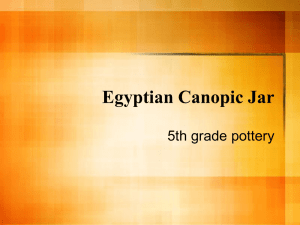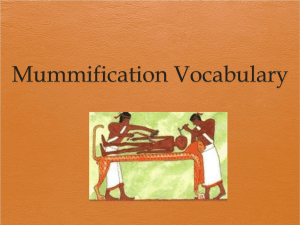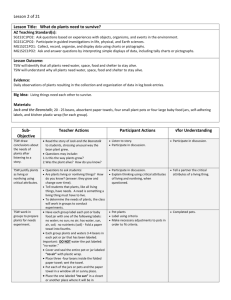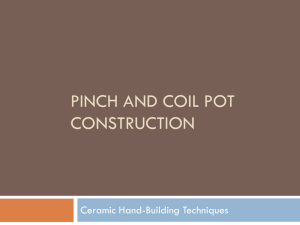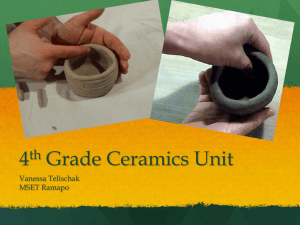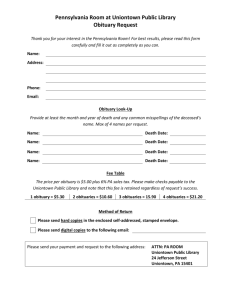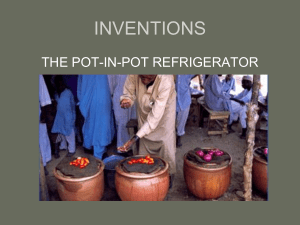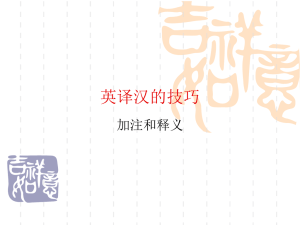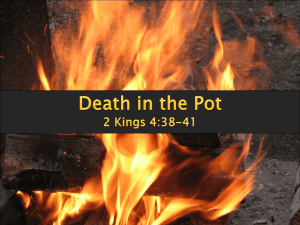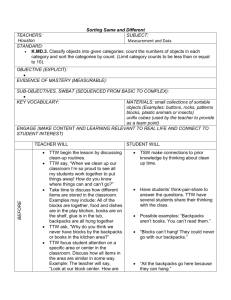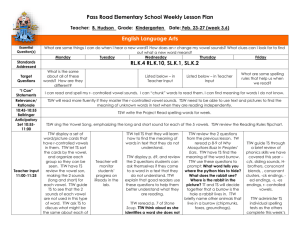Egyptian Canopic Jars
advertisement
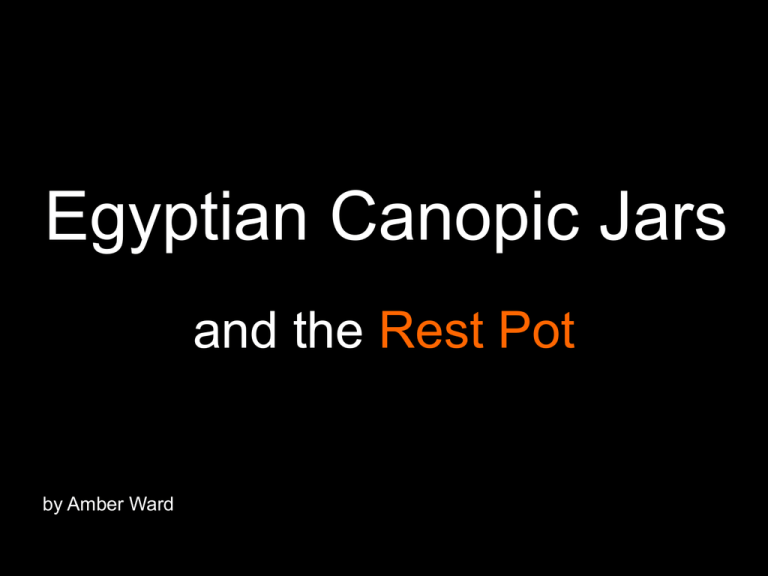
Egyptian Canopic Jars and the Rest Pot by Amber Ward Classroom Communities • Colorado • 30-40 middle school students • Lower-middle socioeconomic status • Ethnically diverse • Adequate PTA support • 7 daily preps. • Kansas • 25 middle school students • Upper-middle socioeconomic status • Ethnically homogenous • Active PTA support • 3 daily preps. Day 1: Obituary Anticipatory set: TSW answer the following via think-pair-share: What one thing would you not want to live without? TTW . . . 1. Read obituary from newspaper 2. Create obituary with help from students 3. Dispense obituary examples Day 1: Obituary (cont’d.) 4. TSW write a one paragraph obituary, answering . . . • Who were you? • How will people remember you? • What was your occupation? • Did you have a family? • How old were you when you passed away? • What were your hobbies? Day 2: Art History • TSW circle 5-10 adjectives from obituary • TSW design complementary symbols • TTW introduce Egyptian history and canopic jars visually and aurally Canopic Jar: Examples Canopic Jar: History Duamutef: the jackal-headed god represented the east; jar contained the STOMACH and was protected by the goddess Neith. Qebehsenuef: the falcon-headed god represented the west; jar contained the INTESTINES and was protected by the goddess Selket. Hapi: the baboon-headed god represented the north; jar contained the LUNGS and was protected by the goddess Nephthys. Imseti: the human-headed god represented the south; jar contained the LIVER and was protected by the goddess Isis. Day 3: 1. Why “Rest Pot” title? 2. Q: What one thing would you not want to live without? A: My brain 3. TTW model visual communication via Rest Pot “top view” and “side view” design in light of above answer • Size (tall and narrow) • Form (figural) • Surface design (symbols from obituary adjectives) • Lid and handle: TTW solicit feedback from students • Hand-building technique (coil) 4. TSW play with clay for 15 minutes “form follows function” Pots: Pinch, Coil, Slab Days 4-12 1. Hand building demonstration (1 day) 2. Clay vocabulary; I’m sorry, I have no idea what you’re talking about. 3. Work in progress; greenware (5 days) 4. Dispense and preview rubric 5. Formative assessment 6. Glazing demonstration 7. Glaze pots (2 days) Day 13: Critique 1. Find a work a person you know would like. Why do you think s/he would like it? 2. Find a work you think an artist would like. Why do you think s/he would like this? 3. Find a work you wonder about. What do you wonder? 4. Find a work you know something about. What do you know? 5. Find a work that is familiar. Why is it familiar? Rubric The student will earn a number from 0 to 10 for each of the five requirements listed below. Total possible points equal 50. 10 9 8 7 6 Excellent Very Good Good Satisfactory Unsatisfactory 46 - 50 41 - 45 37 - 40 32 - 36 31 - below A B C D F 1.Did the student design a clay pot that is communicative of his/her self-identity via innovative symbols, surface design, and/or form? 2.Did the student perform fundamental hand building approaches in clay, such as coils, slabs, and pinch? 3.Did the student construct a Rest Pot based on a personal interpretation of Egyptian Canopic jars? 4.Did the student analyze meaning and intention in works of art via critique? 5.Did the student have a positive attitude toward all members of the classroom community? Statement: Rest Pots Ms. Ward’s 3-D Art students recently learned about the Egyptians and their ceramic canopic jars. These jars held mummified organs and were often placed in the tomb of the deceased--along with food, drink, cosmetics and valuables. The visual art students chose any one item (animate or inanimate) that they found particularly valuable and/or sentimental. After journaling, the students then sculpted a ceramic Rest Pot that reflected this item. The student will be able to… •design a clay pot that is communicative of his/her personality via innovative symbols, surface design, and/or form. Standard 1 •perform fundamental hand building approaches in clay, such as: a coil, slab or pinch pot. Standard 3 •construct a Rest Pot based on a personal interpretation of Egyptian canopic jars. Standard 4 Questions?
